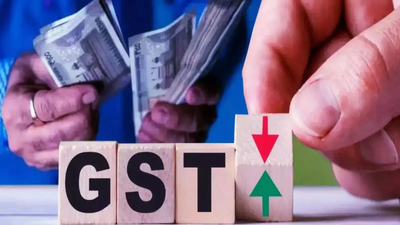NEW DELHI: The impact of pre-GST revamp pause in sale of several products, such as automobiles and white goods, and the lower rates rolled out from Sept 22 slowed down the growth in gross GST receipts but the mop up remained close to the Rs 2 lakh crore-level, data for October showed. Official numbers released on Saturday showed GST collections in Oct for transactions in Sept totalled 1.96 lakh crore, an increase of 4.6% compared to Rs 1.87 lakh crore in October last year.This was the slowest pace of increase this fiscal. In Aug and Sept, GST collection rose 6.5% to Rs 1.86 lakh crore and at 9.1% to Rs 1.89 lakh crore. Gross domestic revenue grew 2% to Rs 1.45 lakh crore, while tax from imports rose nearly 13% to Rs 50,884 crore in October. The data showed GST refunds rose 39.6% year-on-year in Oct to Rs 26,934 crore.In Sept, GST Council had unveiled reforms to GST rate structure, which led to a sharp reduction in rates on a raft of items, bringing relief to consumers, and the latest data showed apprehensions of decline in collections have been negated.The rate cuts, effective September 22, have revived consumption demand, and experts said GST revenues for Nov are likely to show a sharp rebound.“Despite massive rate cuts effective from September 22, a slight increase in domestic GST collection is very encouraging and shows that demand is steadily increasing,” said Pratik Jain, Partner at consulting firm Price Waterhouse & Co LLP.“Consistent increase in GST refunds (domestic as well as exports) shows confidence of tax administration that GST collections would show positive trend in future as well. Next month’s data would have the full impact of GST cuts and would be keenly awaited,” added Jain.On the back of a fillip provided by a reduction in GST on 375 items, consumers had flocked to stores and car dealerships resulting in highest Navratri sales in over a decade, government officials had earlier said, citing industry data.“The GST collections, while aligning with immediate expectations, reflect a muted momentum in Sept primarily due to rate rationalisation effect in the majority part of the Sept month and the deferred consumer spending ahead of the upcoming festive season. This anticipated lag is likely to be compensated by more robust numbers in the next month, driven by seasonal buoyancy,” said Saurabh Agarwal, Tax Partner at EY India. “The impressive, high percentage growth in collections from states and UTs like Arunachal Pradesh, Nagaland, Lakshadweep and Ladakh is a tangible indicator of holistic economic development across India,” he said.








